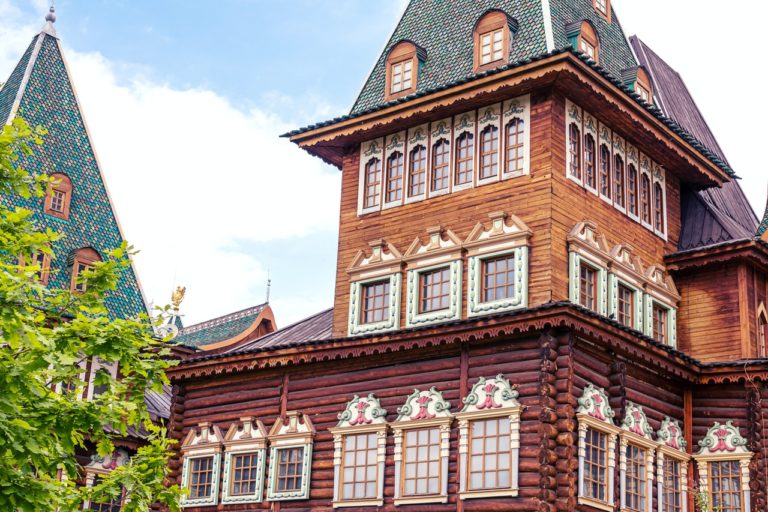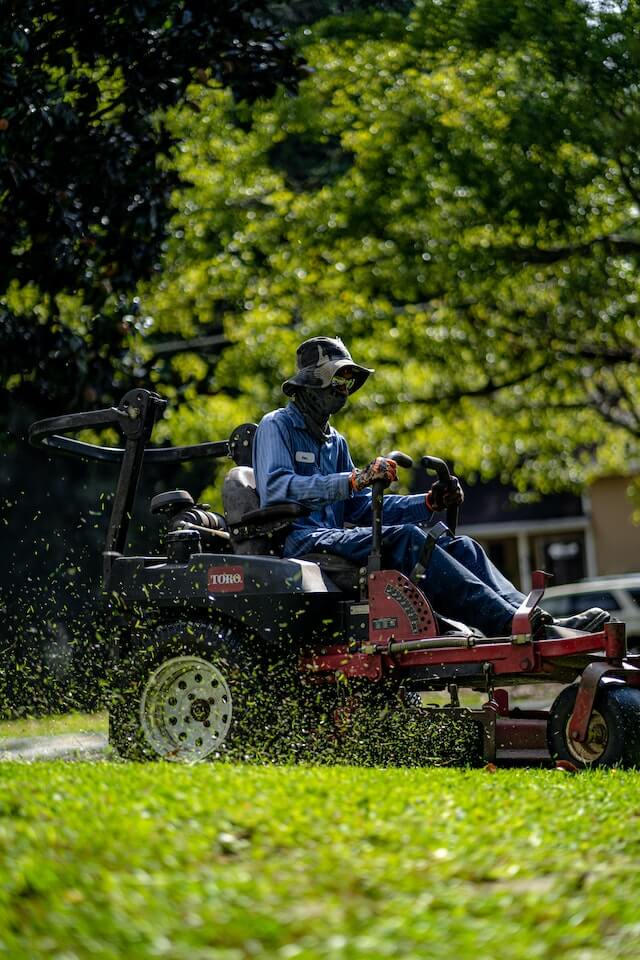Caught between East and West, Russian architecture is steeped in both history and Orthodox Christianity, giving birth to a highly unique, yet wholly underappreciated, architectural style.
Various cities in Russia utilize different aspects of Russian architecture, from traditional styles to modern approaches. We take a brief look at what makes architecture “Russian”, and some examples that mix tradition with the modern.
Features of Traditional Russian Architecture

From its distinctive domes to its vibrantly painted structures and its sloped roofs, Russian architecture is a distinct mix of opulence and practicality, reflecting its complex history of noble excess, Soviet oppression, and the region’s harsh and sometimes inhospitable landscape.
Although various czars and emperors propagated Russian architecture throughout the centuries, it was Catherine the Great and her son Paul I who took Russian architecture from a relatively obscure style of building into a European classic, prompting peasants from all over Russia to move to the city and jumpstart Russia’s move into the modern world.
Byzantine Origins
As one of the successors of the Byzantine empire in the middle ages, Byzantine architecture and culture has informed and influenced traditional Russian architecture since at least the early Muscovite period of Russian history. Russian architecture reflects many of its Byzantine roots, especially in its onion domes (which are supposed to invoke the idea of candle flames) and vibrant colors.
St. Basil’s Cathedral and the Cathedral of Christ the Savior (both found in Moscow) are excellent examples of Russian architecture’s Byzantine roots.
Natural Wood
The use of natural, Siberian wood is a popular Russian architectural feature, considering the country’s vast forests of sturdy timber that has been naturally acclimated to Russia’s formidable climate. This makes it perfect as weather-proof materials for churches, houses, and town walls, with Russian masons learning early on how to carve and color their wood for a more visually-stunning look.
Some researchers argue, however, that wood became a popular material in Russian architecture because of the constant threat of Mongol invasion. Stone and metal were often used in the construction of weaponry and fortifications, with the more relatively fragile wood being left for the construction of houses and churches instead.
Wood was probably the most popular construction material in traditional Russian architecture. Building in huge territories surrounded by forests, this was the best choice for houses, churches, and town walls. The material was often carved into different shapes and colored to add decorative elements to the buildings.
Use of Bricks
By the 19th century, brick-making had become a major industry in Imperial Russia, and Russian architecture slowly incorporated it into its style. Prime examples of Russia’s mastery of brickwork can be found in several of Moscow’s buildings, like the State Historical Museum, built between 1875 and 1883, and Igumnov’s House, built between 1888 and 1895.
Floral Patterns
Mostly seen as interior design elements, floral patterns and ornaments are heavily used in traditional Russian architecture, from wall paintings and tile mosaics to brick designs and wood carvings. The use of these floral patterns is, again, a hold-over from traditional Russian architecture’s Byzantine origins.
Narrow Windows
Tall and narrow windows are a hallmark of traditional Russian architecture, a variation on strict geometrical forms found in Byzantine architecture (which, in itself, borrowed from Islamic architecture). The upper part of these narrow windows are usually shaped into a subtle arch.
Not only did this give buildings a distinctly Russian look, it also helped architects manage the fierce Russian winters and allow the buildings to have defensive positions from which to repel invaders (often Mongol).
Arches
From narrow windows and doors to ceilings and free-standing structures, traditional Russian architecture incorporates arches wherever it can, with arched ceilings being the most popular application of the shape. This is meant to mirror the shape of the sky, as Russian architects would also incorporate their vibrant mosaics and colors into the ceiling façade.
The “Terem” Roof
Possibly one of the most distinctive features of Russian architecture, the “Terem” roof is a triangle-like rooftop that features a small and subtle angle between the two parts of the roof structure. Terem roofs are either used as the main feature of a roof, or it serves as the base for smaller, decorative towers and other design elements.
Hallmarks of Russian Architecture

Distinct, recognizable, and strikingly beautiful, Russian architecture spans a long history of differing styles and influences, from Byzantine and Baroque to Continental Europe and Soviet Socialist Classicism.
Church of the Resurrection, Kizhi Island
Located on Lake Onega in St. Petersburg, the islang of Kizhi is famous for its beautifully-preserved collection of wooden churches, with some dating back to the 14th and 15th centuries. One of the most remarkable examples of these churches is the Church of Resurrection of Lazarus, also known simply as the Church of the Resurrection.
These complex, wooden churches were often built on hilltops, overlooking entire forests and is the highest part of most villages. The walls of these wooden churches were often crude and rudimentary, reflecting the Viking log huts that are also present the area. However, what sets these wooden churches apart are their elaborate and complex roofs, of which the Church of the Resurrection has some of the most distinct on the island.
The onion dome, which symbolizes candle flames and heaven in Russian Orthodoxy, are a trademark of traditional Russian architecture’s Byzantine roots. Strictly decorative, these onion domes offered no structural function, but were added as part of aesthetic appeal.
St. Basil’s Cathedral in Moscow
One of the most distinct, if not THE most distinct, example of Russian architecture, St. Basil’s Cathedral in Moscow, located just outside the Kremlin. It highlights all of the aspects of traditional Russian architecture: vibrant colors, onion domes, the use of wood and brick, ornamental floral design elements, and intricate arches.
Built by Ivan the Terrible in 1560, St. Basil’s Cathedral, formally known as the Cathedral of the Protection of the Mother of God, was meant as a monument to Russia’s early victor against their Tatar enemies in Kazan. It is the hallmark of the Russo-Byzantine architecture, leveraging all of the best design elements of the style into one building.
Legend has it that Ivan the Terrible, perhaps trying to remain on-brand with his name, decided to blind the architects and designers of the church so that they can never again build anything as brilliant.
Hermitage Winter Palace in St. Petersburg
After the erection of St. Basil’s Cathedral, and after the passing of Ivan the Terrible, Russian architecture shifted towards more Eastern and European styles, culminating in the completion of the Imperial Hermitage Winter Palace in St. Petersburg.
Designed and built by renowned 16th century architect Rastrelli, the Hermitage uses Baroque and Rococo influences in its architectural flourishes, a bold move by the architect, considering that those styles were mainly used for furnishings. Nevertheless, the risky move paid off, and Rastrelli created one of the most decadent and opulent palaces in Continental Europe (not to mention a perfect sanctuary for introverts like the Russian rulers), rivaling even the legendary Palace of Versailles.
Throughout the centuries, countless Russian rulers (and their mistresses) added to the palace, from simple home remodeling to extensive reconstructions. Serving as the winter residence of Imperial Russian rulers since the 17th century, the Winter Palace was eventually taken over by the Bolsheviks in the October Revolution, eventually re-purposing it into the Hermitage museum.
Lenin’s Mausoleum in Moscow
Designed by Alexei Shchusev, Lenin’s Mausoleum serves not just as a tomb for one of 20th century’s most iconic, revolutionary, and notorious, thinkers, but it also serves as a prime example of Russian Constructivist architecture, a style of architecture that focused on using abstract and austere visual elements to reflect modern industrial society and urban space.
The mausoleum itself is composed of simple cubes that are arranged to create a step pyramid. This particular building is considered to be a masterpiece of architectural simplicity, a paragon of Russian Construcivist architecture and philosophy, and the highlight of Alexei Shchusev’s illustrious career.
It was constructed immediately after Vladimir Lenin’s death, with additions being constructed in 1924 to give it a pyramid shape. Meanwhile, the original wood paneling of the mausoleum was replaced with red granite to symbolize Communism, and highlighted with black labradorite to symbolize the nation’s mourning of Lenin’s passing.
The “Seven Sisters” of Moscow
As the Bolshevik’s and the Russian communist seized power, they sought to reconstruct Moscow to reflect their ideologies. Throughout the late 1920s and up to the late 1930s, dictator Joseph Stalin demolished various churches, cathedrals, bell towers, and other wooden structures in the city to make way for grand and imposing structures called the Vysotniye Zdaniye, or “High Buildings”.
After the Second World War, Stalin went full-speed ahead with his plan, erecting seven out of eight planned skyscrapers in the heart of Moscow between 1945 and the late 1950s. These structures, dubbed the “Seven Sisters” are as follows:
- Kotelnicheskaya Naberezhnaya, also known as Kotelniki Apartments or the Kotelnicheskaya Embankment
- The Ministry of Foreign Affairs
- The Moscow State University Tower
- Leningradskaya Hotel
- Red Gate Square
- Kudrinskaya Square, also known as Kudrinskaya Ploshchad 1, Revolt Square, Vostaniya, and Uprising Square
- The Hotel Ukraine, also known as the Radisson Royal Hotel
Mercury City Tower in Moscow
Moscow is notorious in Europe for having fewer building regulations, but this has allowed Russia to recover from its Soviet days, ushering in a 21st century renaissance in its construction industry. One of the highlights of this building boom is Mercury City Tower, Moscow’s first ‘green’ building and the newest addition to the Moscow skyline.
Covered in golden brown glass, the building stands at 339 meters, 29 meters higher than The Strand in London. It has 75 floors of mixed-use office, residential, and commercial purposes, and has the ability to collect rain water and melting snow for its plumbing, not to mention utilize natural lighting for 75% of its workspaces.
It also used various ‘green’ construction practices, like segregating construction waste and sourcing materials from local producers.
All in all, Russian architecture is constantly evolving, but it always grounds itself with its Byzantine traditions, its onion domes, and its mix of past and present to move itself into the future.







